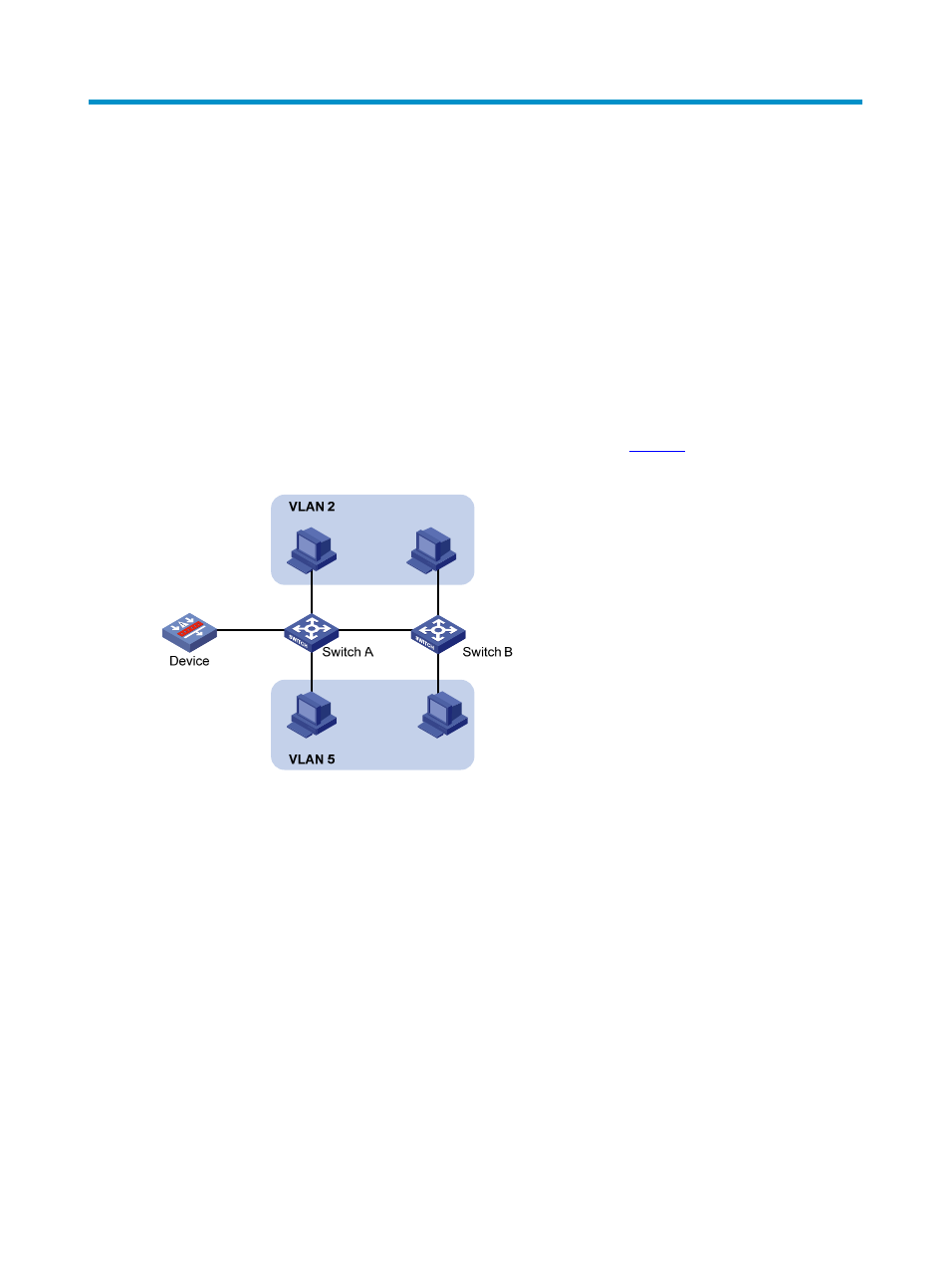Vlan configuration, Overview, Introduction to vlan – H3C Technologies H3C SecPath F1000-E User Manual
Page 391: Vlan fundamentals

1
VLAN Configuration
Overview
Introduction to VLAN
Ethernet is a network technology based on the Carrier Sense Multiple Access/Collision Detect
(CSMA/CD) mechanism. As the medium is shared, collisions and excessive broadcasts are common on
an Ethernet. To address the issue, virtual LAN (VLAN) was introduced. The idea is to break a LAN down
into separate VLANs, that is, Layer 2 broadcast domains whereby frames are switched between ports
assigned to the same VLAN. VLANs are isolated from each other at Layer 2. A VLAN is a bridging
domain, and all broadcast traffic is contained within it, as shown in
.
Figure 1 VLAN diagram
A VLAN is logically divided on an organizational basis rather than on a physical basis. For example, all
workstations and servers used by a particular workgroup can be connected to the same LAN, regardless
of their physical locations.
VLAN technology delivers the following benefits:
•
Confining broadcast traffic within individual VLANs. This reduces bandwidth waste and improves
network performance.
•
Improving LAN security. By assigning user groups to different VLANs, you can isolate them at Layer
2. For hosts in different VLANs to communicate, routers or Layer 3 switches are required.
•
Flexible virtual workgroup creation. As users from the same workgroup can be assigned to the same
VLAN regardless of their physical locations, network construction and maintenance is much easier
and more flexible.
VLAN Fundamentals
To enable a network device to identify frames of different VLANs, a VLAN tag field is inserted into the
data link layer encapsulation.
